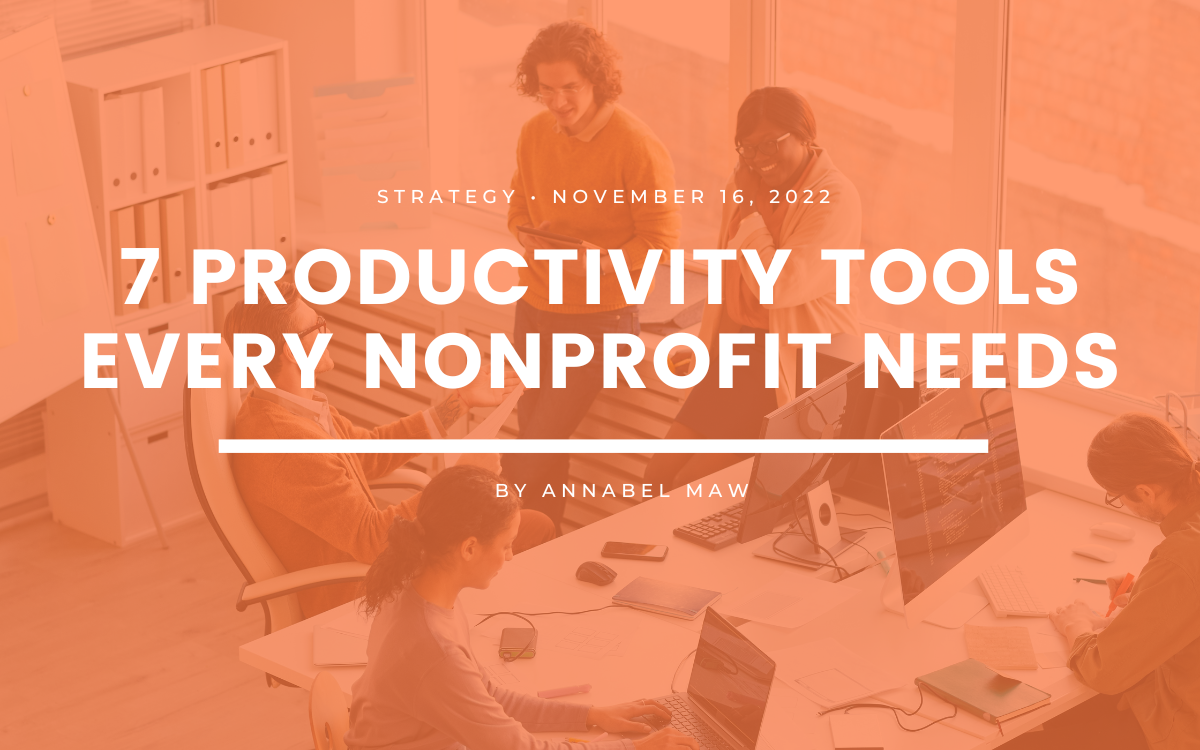7 Productivity Tools Every Nonprofit Needs
5 min to read ✭ Check out these 7 productivity tools provided by Jotform to help your nonprofit free up time and resources!
When running a nonprofit, it seems that there’s never enough time to get everything done.
Community Boost surveyed 439 nonprofits, and more than 45 percent of respondents indicated that limited time was the biggest hindrance to their organization’s growth.
Whether you need to streamline your email marketing or your data-collection efforts, these seven tools can enhance your productivity, relieve staff burdens, and help you meet your goals, even with limited time.
1. Asana
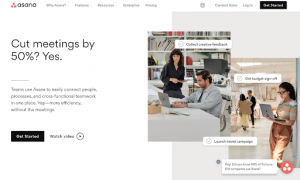
Asana is a project management tool that allows your entire team to collaborate on projects and workflows. You can easily assign tasks, prioritize them with deadlines, and sort them by team or department, such as your fundraising or fiscal department.
Boards make it easy to see the work at a glance, including its progress, so supervisors can check in with teams and ensure everything is completed by the deadline. Asana also has a valuable automation feature that lets you automatically assign work and due dates for repetitive tasks, saving you the time of having to manually create those recurring tasks each week or every day.
When you have multiple teams working on multiple projects, Asana can help keep things organized. This is particularly important because of the silos that so often occur in nonprofit settings. With Asana, all of your teams can work together and see what other teams are focused on. It’s a must-have for collaborative cross-team projects, like grant writing, when your staff needs to effectively work together.
With the Asana for Nonprofits program, 501(c)(3) nonprofits, K–12 schools, higher education institutions, and public libraries with nonprofit status can get 50 percent off of a one-year Premium or Business subscription (normally $10.99 and $24.99 per user, per month, respectively).
2. Slack
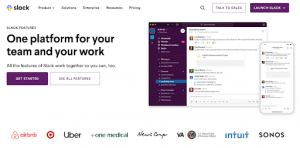
Slack is another tool that can help break down those silos. An intuitive messaging and collaboration platform, Slack is a natural addition to your tools. With Slack, staff can instantly message individual employees or entire teams, and the ability to send audio and video clips enhances that messaging experience.
Slack is a must-have when you’re trying to keep all of your staff connected and communicating. It’s an asset for remote or hybrid teams, and is a great choice when you have employees working in different time zones.
The Slack for Nonprofits program offers free or discounted plan upgrades to organizations that have charitable status with the IRS, a local tax service, or a TechSoup Global partner. Workspaces with 250 or fewer members can get a free Pro plan upgrade, and workspaces of any size can get an 85 percent discount on the Business+ plan, which typically costs $12.50 per user, per month.
3. Jotform
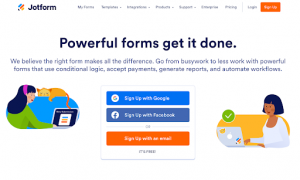
With Jotform, you can easily and securely gather important data and information. Jotform features thousands of form, app, table, and even PDF templates that you can customize, thanks to the drag-and-drop editor. There’s absolutely no coding knowledge required.
There are potentially endless ways to use Jotform for your nonprofit. You can create a donation form for your website, craft e-newsletter signup forms to build your campaign lists, create forms to embed on your website to collect volunteer contact information, and more. Plus, with Jotform Sign, you can create documents and gather e-signatures, such as for budget approvals or grant applications.
Jotform’s Starter plan is free, while options like the Bronze, Silver, and Gold plan cost $34, $39, and $99 per month, respectively. Jotform’s Nonprofit program offers a 50 percent discount to qualified nonprofits.
4. Mailchimp
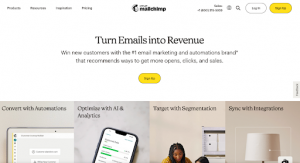
Mailchimp makes it easy to create professional emails and harness the power of email marketing for your nonprofit.
This platform is loaded with tools to maximize the effectiveness of your emails. Automation capabilities let you customize the message you’re sending to recipients based on the actions they’ve taken. A/B testing capabilities help you maximize the return that you get on your campaigns, and pre-built email templates can save you time creating your emails.
You can use Mailchimp for everything from fundraising campaigns to corresponding with volunteers. The ability to segment your lists and use templates means you can easily customize emails for highly personalized correspondence with your audiences. This platform can help you’re nonprofit look professional and polished, and you don’t have to know how to code to use it.
Mailchimp offers a free plan, an Essentials plan to start at $11 per month, a Standard plan starting at $17 per month, and a Premium plan starting at $299 per month. Nonprofits and charities can apply for a 15 percent discount off any plan.
5. monday.com
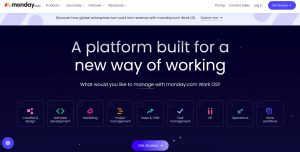
monday.com, a work operating system, simplifies the process of managing everything from your nonprofit’s creative and design efforts to your marketing, projects, HR operations, and more.
The platform allows you to easily customize workflows to monitor your teams, deadlines, and task progress. With the ability to centralize processes, tools, files, and work into one system, it’s easier to connect your teams, facilitate cross-organization communication, and break down the silos that can occur in nonprofits.
Customizable dashboards make it easy to review progress, deadlines, and budgets for strategic decision-making and improved efficiency. Automations allow you to set custom notifications and more, saving you time on repetitive tasks. The platform also integrates with popular tools like Slack, Dropbox, and Adobe Creative Cloud.
monday.com offers five subscription plans that include a free Individual plan; a Basic plan starting at $8 per seat, per month; a Standard plan starting at $10 per seat, per month; and a Pro plan starting at $16 per seat, per month. The Nonprofit Program offers several discount options that include a 33 percent discount per user on the Enterprise Plan.
6. Loom
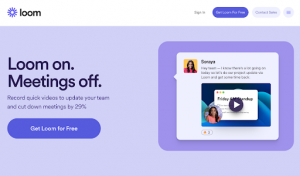
Loom is a practical solution for meetings that seem to take up your entire day. With Loom, your nonprofit staff can record quick videos to provide updates and trainings. Loom is capable of recording device screens, including mobile devices and desktops. You can share the videos with a link, and staff can comment on and react to them.
Rather than trying to schedule meetings and letting those meetings eat into your daily productivity, Loom is efficient but still conveys the message and details you need to share. It’s a great option for busy nonprofits where you need to keep large teams updated, want to ensure everyone knows how to use a new product, or when you have staff working remotely or in different time zones.
Loom offers a free Starter plan, a Business plan for $8 per user, per month, and an Enterprise plan. Teachers and students can get a free plan through Loom for Education.
7. Neon One
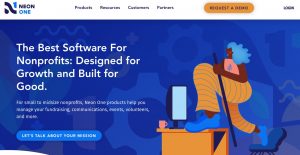
Designed specifically for small to midsize nonprofits, Neon One helps with your specialized needs. Neon One offers solutions for donor management, events management, fundraising, program management, and operations. Those solutions include
- Neon CRM
- Neon websites
- Full-stack fundraising support
- Arts People, software designed to support the performing arts
- And more
NeonOne’s full suite of integrations makes the platform a natural addition to your existing software. Just a few of those integrations include Overflow, VolunteerLocal, Quickbooks, Mailchimp, and Constant Contact.
Additionally, Neon One consultants bring expertise in key areas like fundraising and stewardship, technology planning and integration, and communications and storytelling to help guide your nonprofit’s growth.
While Neon One doesn’t post its pricing online, you can learn more by requesting a free demo.
Choosing the right productivity tool for your nonprofit
These seven tools address not only the most common challenge facing nonprofits — lack of time — but also some of the more nuanced challenges, like effective communication across teams. Any one of these tools can enhance your productivity and allow you to work more successfully toward your nonprofit’s mission.
There may never be enough hours in the day for all that you want to accomplish with your nonprofit, but these tools can maximize what you are able to get done.


